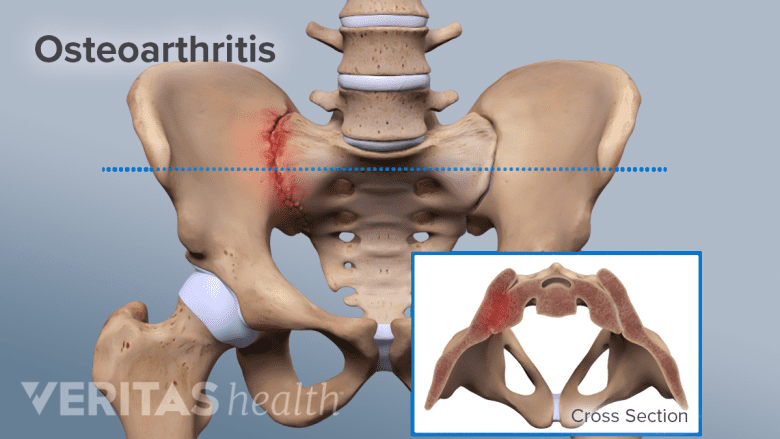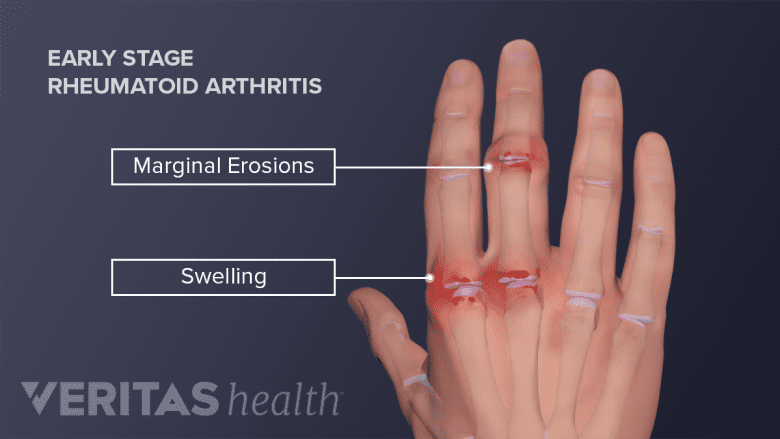Celecoxib is a prescription nonsteroidal anti-inflammatory drug (NSAID) commonly prescribed for many types of joint pain and inflammation.
See NSAIDs: Non-Steroidal Anti-Inflammatory Drugs
The medication is sold under the brand name Celebrex, or in generic form. Celecoxib is a type of medication known as a COX-2 inhibitor because of the way it works in the body.
In This Article:
- About Celebrex (Celecoxib), a COX-2 Inhibitor
- Potential Risks and Complications of Celecoxib
Conditions Treated with Celecoxib
Common conditions that Celebrex may treat include:
Osteoarthritis

Celecoxib relieves osteoarthritis symptoms like joint stiffness, pain, and swelling.
Joint stiffness, pain, and swelling—especially following inactivity—are frequent symptoms of osteoarthritis that may be relieved by celecoxib. By easing these symptoms, the medication allows an individual to exercise more, which is critical to keep osteoarthritis from progressing. Some medical research has also found celecoxib helpful in slowing joint damage in osteoarthritis.1Cho H, Walker A, Williams J, Hasty KA. Study of osteoarthritis treatment with anti-inflammatory drugs: cyclooxygenase-2 inhibitor and steroids. Biomed Res Int. 2015;2015:595273.
Rheumatoid arthritis

Celecoxib eases joint swelling and inflammation seen in rheumatoid arthritis.
The swelling and inflammation of joints that characterize rheumatoid arthritis can often be alleviated with celecoxib. Unlike disease-modifying anti-rheumatic drugs (DMARDs) used for rheumatoid arthritis, celecoxib does not address the disease itself. Alleviating these symptoms enables people to be more physically active, which has been shown to improve range of motion and reduce disability.
See Rheumatoid Arthritis in the Spine
Juvenile rheumatoid arthritis
Inflammation, stiffness, tenderness, swelling, and pain in the joints, as well as rashes and fever, are often experienced with juvenile rheumatoid arthritis. Celecoxib or another NSAID are often the only medications needed for this disease. Celecoxib can relieve all but the rash symptoms. It can be taken by children age 2 and older. As when celecoxib is used for arthritis in adults, the relief of symptoms allows greater participation in physical activities, which can improve daily functioning.
Ankylosing spondylitis
Celecoxib treats ankylosing spondylitis symptoms such as morning stiffness and low back pain.
Early morning stiffness, sacroiliac pain and inflammation, and pain in the lower back, hip, or buttock are typical with this type of arthritis. Celecoxib treats the pain, inflammation, and stiffness.
Acute pain in the back, neck, and elsewhere
Celecoxib’s ability to reduce pain and inflammation makes it helpful in treating strains, sprains, headaches, menstrual pain, and aches and pains caused by overexertion. It also treats the aches and pains of the flu and other illnesses.
Post-surgical pain
Celecoxib can be helpful when taken by itself or in combination with other medications to relieve pain following surgery, including joint replacement surgery.
Chronic low back pain
Symptoms of this common condition include inflammation as well as pain. Both can be relieved with celecoxib.
See Types of Back Pain: Acute Pain, Chronic Pain, and Neuropathic Pain
Gout
Celecoxib is commonly prescribed “off-label” to treat acute gout. Off-label use means the medication is not specifically approved by the U.S. Food and Drug Administration for the condition or symptoms. An off-label medication is typically prescribed if the doctor thinks it will be more helpful than other options for an individual.
Taking celecoxib 30 minutes before physical activity is advised for those with osteoarthritis, rheumatoid arthritis, or juvenile rheumatoid arthritis. People with arthritis may need to take the medication for up to two weeks to get the maximum benefit.
Those taking celecoxib on an as-needed basis, rather than on a schedule, usually get the best pain relief by taking the medication at the first sign of pain.
How Celecoxib Works
As a COX-2 inhibitor, celecoxib blocks an inflammation-promoting enzyme called COX-2. Medications known as COX-2 inhibitors were developed to work as well as traditional NSAIDs but with fewer stomach problems.
However, many reports of heart attacks and stroke prompted the FDA to re-evaluate the risks and benefits of the COX-2s. Two drugs in this class were taken off the U.S. market following reports of heart attacks in people who took them.
Celebrex is still available, but with strong warnings, as are required for all NSAID medications. The risk of serious cardiovascular thrombotic events, including myocardial infarction (MI) and stroke, are black box warnings—the strictest issued by the FDA—and outlined in black on the medication label. This risk may occur early in the treatment and may increase with duration of use.
See Potential Risks and Complications of NSAIDs
The FDA also advises that celecoxib be prescribed at the lowest possible dose for the shortest time possible.
The decreased risk for gastrointestinal problems is a significant selling point for celecoxib because many people are unable to take NSAIDs such as ibuprofen due to the risk of gastrointestinal bleeding.
One medical study showed a significantly lower incidence of gastric ulcers in people with rheumatoid arthritis or osteoarthritis who were prescribed celecoxib rather than diclofenac, another NSAID.2Cheung R, Cheng TT, Dong Y, et al. Incidence of gastroduodenal ulcers during treatment with celecoxib or diclofenac: pooled results from three 12-week trials in Chinese patients with osteoarthritis or rheumatoid arthritis. Int J Rheum Dis. 2010;13(2):151-7. (Diclofenac has a black box warning citing the risk of fatal gastrointestinal bleeding, ulceration, and perforation of the stomach and intestines.)
Another benefit of the COX-2 inhibitor celecoxib is that—unlike other NSAIDs—it does not hamper blood clotting. This can make celecoxib an option for some people on blood-thinning medications such as warfarin (brand name Coumadin).
How Celecoxib Is Taken
Celecoxib is available in 50 mg, 100 mg, 200 mg, and 400 mg capsules, and should be taken with food or milk to avoid an upset stomach. Typical doses range from 200 to 400 mg daily, but the dose for acute gout is up to 800 mg once, followed by 400 mg on the first day, then 400 mg twice daily for a week. Taking the lowest effective dose is recommended.
People who have trouble swallowing a capsule—a condition called dysphagia—may empty the contents of the capsule onto a teaspoon of cool or room-temperature applesauce and administer immediately with water. Patients are advised to avoid lying down for 30 minutes after taking celecoxib.
- 1 Cho H, Walker A, Williams J, Hasty KA. Study of osteoarthritis treatment with anti-inflammatory drugs: cyclooxygenase-2 inhibitor and steroids. Biomed Res Int. 2015;2015:595273.
- 2 Cheung R, Cheng TT, Dong Y, et al. Incidence of gastroduodenal ulcers during treatment with celecoxib or diclofenac: pooled results from three 12-week trials in Chinese patients with osteoarthritis or rheumatoid arthritis. Int J Rheum Dis. 2010;13(2):151-7.

